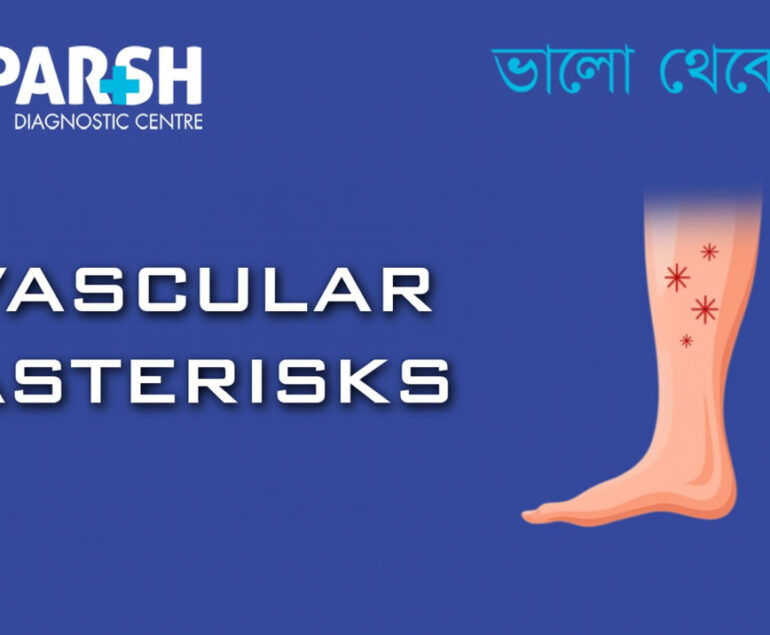Purpura refers to small or large purple-colored spots that appear on the skin or mucous membranes due to bleeding underneath. These spots do not fade when pressed, unlike simple redness or rash. Purpura can be a sign of a mild condition such as a viral infection, or a serious disorder like clotting abnormalities, platelet problems, vasculitis, or even life-threatening conditions. Understanding purpura helps in timely diagnosis, especially because early medical evaluation can prevent complications.
This comprehensive guide explains types of purpura, common causes, risk factors, diagnostic tests, treatment options, and preventive strategies—providing clarity to both patients and caregivers.
What Is Purpura?
It is a medical term used to describe purple or red discolorations on the skin caused by bleeding beneath the surface. It occurs when small blood vessels (capillaries) break and leak blood.
Purpura can range from small pinpoint spots (petechiae) to larger patches (ecchymoses). Their size and cause determine the type and severity of the condition.
It is not a disease itself but a symptom of an underlying problem involving either:
Blood clotting mechanisms
Platelet count or platelet function
Fragility or inflammation of blood vessels
Certain medications
Infections
Types of Purpura
It is broadly classified into two major categories:
1. Non-Thrombocytopenic Purpura
This occurs without a reduction in platelet count. Causes include:
Allergic vasculitis
Senile purpura
Trauma
Infections
a. Senile Purpura
Seen in elderly adults due to thinning of the skin and fragile blood vessels. It causes large, irregular bruises on the hands and arms.
b. Henoch–Schönlein Purpura (HSP)
A type of vasculitis common in children, causing purpuric rash, abdominal pain, joint pain and kidney involvement.
2. Thrombocytopenic Purpura
This occurs when platelet count is low. Low platelets lead to spontaneous bleeding.
Common causes include:
Immune thrombocytopenic purpura (ITP)
Drug-induced thrombocytopenia
Bone marrow disorders
a. Immune Thrombocytopenic Purpura (ITP)
An autoimmune disease where the body destroys its own platelets. It can be acute (in children) or chronic (in adults).
b. Thrombotic Thrombocytopenic Purpura (TTP)
A rare but severe condition where blood clots form in small vessels, destroying platelets and causing organ damage. It requires emergency treatment.
Symptoms of Purpura
It presents primarily as discoloration, but may also have associated symptoms depending on the cause.
Skin Symptoms
Purple, red, or brown spots
Spots that do not blanch when pressed
Clusters of spots, usually on legs, arms, or buttocks
Bruising without injury
Associated Symptoms
Nosebleeds
Bleeding gums
Blood in urine or stool
If purpura is associated with severe symptoms like confusion, high fever, or difficulty breathing, immediate medical attention is required.
Common causes of Purpura
It has multiple causes, ranging from benign to life-threatening. Major causes include:
1. Platelet Disorders
Immune thrombocytopenic purpura (ITP)
Thrombotic thrombocytopenic purpura (TTP)
Disseminated intravascular coagulation (DIC)
Leukemia
Aplastic anemia
2. Vascular Disorders
HSP
Senile purpura
Scurvy (Vitamin C deficiency)
3. Infections
Dengue fever
Meningococcemia
Viral infections like Hepatitis C, HIV, Parvovirus B19
4. Medications
Certain drugs can cause purpura:
5. Trauma or Physical Causes
Excessive scratching
Tight clothing
Minor injuries
6. Systemic Diseases
Understanding the root cause is crucial for effective treatment.
How is Purpura diagnosed?
It is diagnosed through a combination of clinical evaluation and laboratory tests.
1. Physical Examination
Inspecting the pattern, size, and distribution of spots
Checking for associated symptoms such as joint pain, fever or swelling
2. Blood Tests
Complete Blood Count (CBC) – platelet levels
Coagulation profile – PT, aPTT
Inflammatory markers – ESR, CRP
Autoimmune markers – ANA, ANCA
3. Urine Test
To detect kidney involvement (especially in HSP).
4. Skin Biopsy
If vasculitis is suspected, a biopsy may be performed.
5. Bone Marrow Test
Used when platelet production issues or leukemia are suspected.
Accurate diagnosis ensures appropriate treatment and prevents complications.
Treatment for Purpura
Treatment depends entirely on its underlying cause.
1. Treating Thrombocytopenic Purpura
Steroids (prednisolone)
IV Immunoglobulin (IVIG)
Rituximab (for chronic ITP)
Splenectomy in selected cases
Plasma exchange (in TTP)
2. Treating Non-Thrombocytopenic Purpura
Managing vasculitis with steroids or immunosuppressants
Vitamin C supplements for scurvy
Avoiding sun exposure for senile purpura
Treating infections with antibiotics or antivirals
3. Discontinuing Problematic Medications
If a drug is causing purpura, it is stopped under medical supervision.
4. Supportive Care
Pain relief
Adequate hydration
Monitoring for bleeding
5. Emergency Treatment
If purpura is accompanied by:
Severe bleeding
High fever
Neurological symptoms
Low blood pressure
Immediate hospitalization is essential.
Complications of Purpura
While many cases are mild, serious causes may lead to complications such as:
Severe internal bleeding
Heart or brain involvement
Organ damage
Shock (in meningococcemia or DIC)
Early diagnosis drastically reduces these risks.
Prevention of Purpura
Although not all cases can be prevented, certain measures can lower the risk:
1. Maintain Good Nutrition
Adequate vitamin C and protein keep blood vessels strong.
2. Avoid Self-Medication
Blood-thinning or platelet-affecting drugs should be taken only when prescribed.
3. Protect Skin from Injury
Especially for older adults whose skin is fragile.
4. Manage Chronic Diseases
Regular monitoring of liver, kidney and autoimmune conditions.
5. Avoid Excessive Sun Exposure
Helps reduce senile purpura.
6. Strengthen Immunity
Helps reduce infections that may cause purpura.
When Should You See a Doctor?
Seek immediate medical attention if purpura is accompanied by:
High fever
Persistent bleeding
Black stool or blood in urine
Dizziness or fainting
Signs of infection
Purpura may be the first sign of a serious health problem—early evaluation is vital.
FAQ on Purpura
1. Is it the same as bruising?
Purpura is similar to bruising but typically appears without major injury and does not fade when pressed.
2. Can it go away on its own?
Mild cases, especially due to minor trauma or viral infections, may resolve on their own. However, persistent purpura requires medical evaluation.
3. Is it dangerous?
Not always. Some forms are mild, but others—like TTP or meningococcemia—are medical emergencies.
4. How long does it last?
Depending on the cause, purpura may last from a few days to several weeks.
5. Can children get it?
Yes. Conditions like Henoch–Schönlein Purpura (HSP) commonly affect children.
6. Are purpura spots itchy or painful?
Most purpura spots are not itchy or painful. If they are, vasculitis or infection may be the cause.
7. Can diet help prevent it?
A diet rich in vitamin C, leafy greens and antioxidants strengthens blood vessels and improves immunity.
8. Does it spread?
Purpura itself does not spread, but the underlying condition may worsen if untreated, causing new spots.
Purpura is a visible sign of bleeding under the skin with a wide range of underlying causes—from harmless conditions to serious disorders. Identifying the type and causes through medical evaluation is essential for appropriate treatment. With timely diagnosis and the right care, most cases of purpura can be managed effectively, preventing complications.
#BhaloTheko
Disclaimer:
No content on this site, regardless of date, should ever be used as a substitute for direct medical advice from your doctor or other qualified clinician.

![]()





